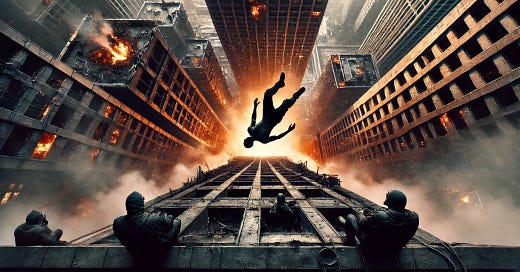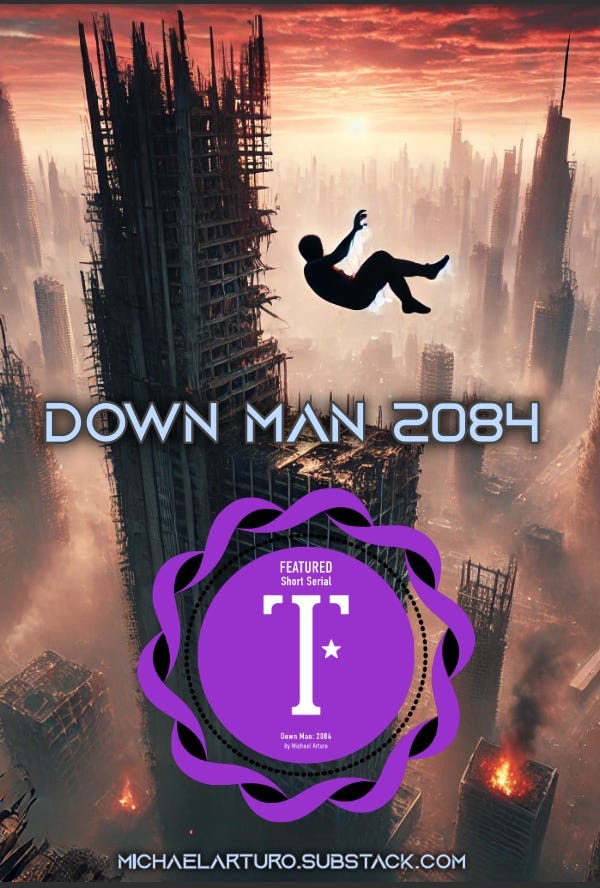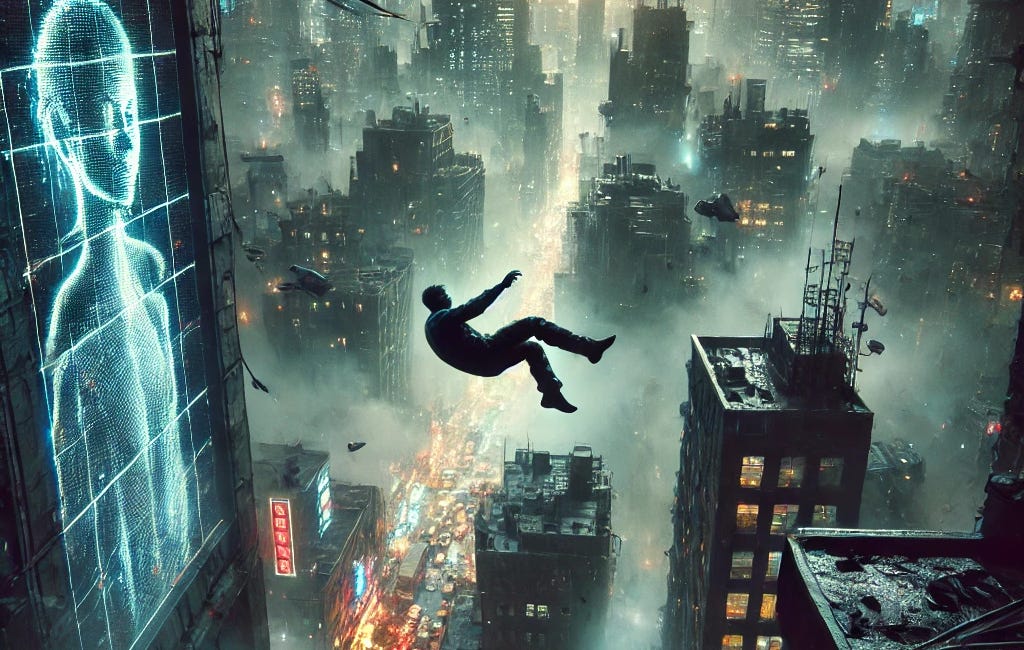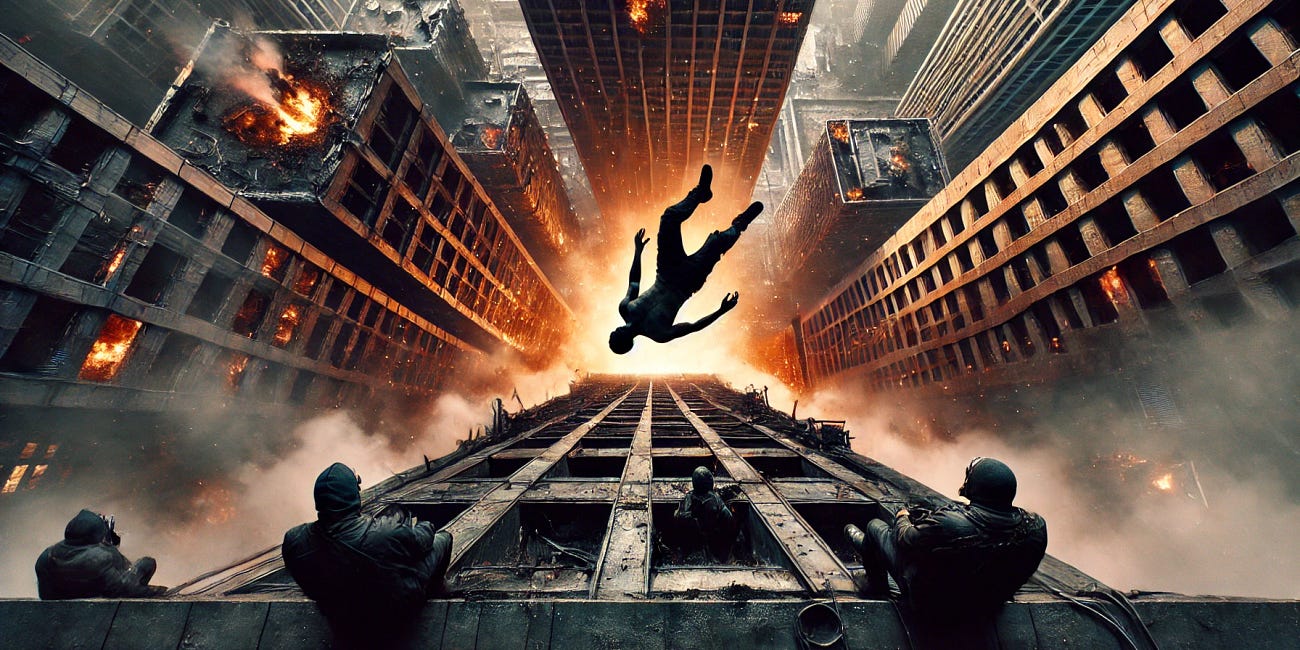Subject: Review of Michael Arturo's short story "Down Man, 2084"
Summary:
Michael Arturo paints a bleak, dystopian future in New York City in the year 2084, specifically focusing on the district of Lower Manhattan, which has been renamed "Down Man" after repeated tragedies and societal decay. The narrative, which the author attributes influences of Orwell, Bradbury, and Phillip K. Dick, explores themes of technological control, the nature of identity, the power of narratives (both true and manufactured), and the enduring, though often fractured, spirit of rebellion. The central figure is Irides, a genetically engineered musician whose mind chip, designed for control, malfunctions and unlocks the ability to manipulate digital identity through "Chameleon Tech." This technology becomes the catalyst for a brief uprising against the omnipresent surveillance state, "Big Other," but is ultimately subverted and weaponized by the system itself. The stories culminate in Irides' apparent downfall, the potential for his legacy, and the fight for identity to continue through a new character, Aya.
Key Themes and Ideas:
The Scars of History and the Decay of Society: The story establish a future New York haunted by past tragedies, particularly the September 11th attacks (2001 and 2051). The physical and psychological weight of these events has transformed Lower Manhattan into "Down Man," a place defined by loss, fear, and a fundamental lack of control. It becomes a haven for the marginalized and defiant.
"New York has always been a city haunted by its ghosts, and its skyline is a living memory of tragedies that shaped the nation."
"Lower Manhattan...became something else entirely: a monument to loss, fear, and the fragile nature of human control. The survivors left to rebuild in the ashes of another catastrophe gave the district a new name: Down Man."
"It was more than a geographical marker. It was an elegy. A reminder of the weight of gravity—both physical and historical. The place where men fell, and where hope never fully rose again."
Technological Control and the Surveillance State ("Big Other"):
"By 2084, Big Other had transformed the world into a digital feudal state. Every citizen was tracked, categorized, assigned a place in the machine."
"Big Other watched from every glowing screen, every drone’s unblinking eye."
"A Sentinel Drone hovered down from the sodium-lit haze, scanning him with the cold precision of an unfeeling algorithm."
Identity as a Construct and a Weapon:
"As defined by the state, identity was nothing more than a dataset, a series of coordinates in a shifting digital landscape. It was not real."
"And what is not real can be rewritten."
"He developed the first iteration of Chameleon Tech—a protocol that could rewrite a person’s biometric signature in real time."
The Power of Narrative and the Manufacturing of Truth:
"Surveillance is not about security. It is about control."
"And control is not about force. It is about perception."
"Big Other perfected its greatest weapon for decades—not violence, but the illusion of truth."
"This was how they dismantled Chameleon. This was how they turned identity against itself."
"They manufactured a past for Irides. They named him Jabari Okoro—a fabricated criminal, a digital phantom inserted into the system’s records."
The Subversion and Commodification of Rebellion:
"Chameleon Technology was dead. Or rather, it had been devoured by the very system it sought to undermine. No longer an open-source tool of liberation, it was now a luxury product, accessible only to the wealthy, the powerful—the ones who had never needed it in the first place."
"The irony burned. His creation, meant to free the people, had become the ultimate tool of the elite. The very technology that could have saved him now concealed his oppressors."
The Fragility of Movements and the Internal Threat:
"Because once the seed of doubt is planted, once the movement begins fighting itself, the battle is already lost."
"Revolution does not die when the enemy attacks from the outside. It dies when the people start questioning whether they were ever fighting the right war."
The Enduring Seed of Rebellion and the Continuation of the Fight:
"They threw down a man. But I’ve found a signal."
"It was salvage. It was refusal. It was a quiet rebellion against oblivion."
"But what it failed to erase was the idea. The belief that identity, once freed from control, could not be caged again."
"Hope, in Down Man, was not something you claimed. It was something you passed, quietly, hand to hand, like contraband."
Most Important Ideas/Facts:
Down Man as a symbol: Lower Manhattan's transformation into "Down Man" is not just geographical; it represents a psychological state of defeat and marginalization resulting from repeated trauma and systemic control.
The nature of Irides: Irides is a tragic figure, a product of genetic engineering whose unintended deviation from the norm allows him to challenge the system. His original gift is music, which symbolizes human unpredictability and expression, later replaced by the ability to see and manipulate the "architecture of control."
Chameleon Tech's double edge: While offering the potential for liberation by disrupting state surveillance, Chameleon Tech's fluidity and mutability ultimately become its greatest weakness when exploited by Big Other.
The "Jabari Okoro" fabrication: The creation of Jabari Okoro is the key turning point in Big Other's counter-revolution. It demonstrates the system's mastery of narrative manipulation and identity erasure.
The show-trial and its purpose: Irides' public trial and forced confession serve not as a legal proceeding but as a theatrical demonstration of state power and a warning to potential rebels.
The betrayal by the "Unseen": Irides' death at the hands of his own followers highlights the success of Big Other's strategy of sowing doubt and turning people against each other.
Aya's role as a potential successor: Aya's act of retrieving Irides' mind chip suggests that the fight for identity will continue, perhaps in a more technological and less visible form, carrying the "seed" of his rebellion.
The question of who decides identity: The recurring question, "Who decides what we are? And what happens when we decide for ourselves?" encapsulates the central conflict of the stories.
In conclusion, Michael Arturo's "Down Man, 2084" offers a powerful and cautionary tale about the dangers of unchecked technological control, the malleability of identity in a digitally saturated world, and the constant struggle for individual autonomy against overwhelming systemic power.
If you appreciate the content
Buy Me A Coffee
Support by hitting the like button or leaving a comment.
Michael Arturo writes contemporary political/social commentary, parodies, parables, and satire. Michael was born and raised in New York City and has a background in theater and film. His plays have been staged in New York, London, Boston, and Los Angeles.
















Share this post